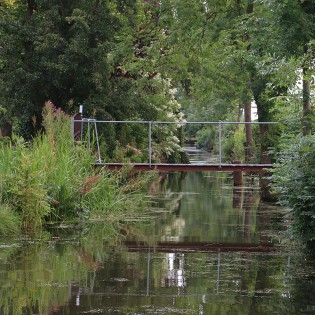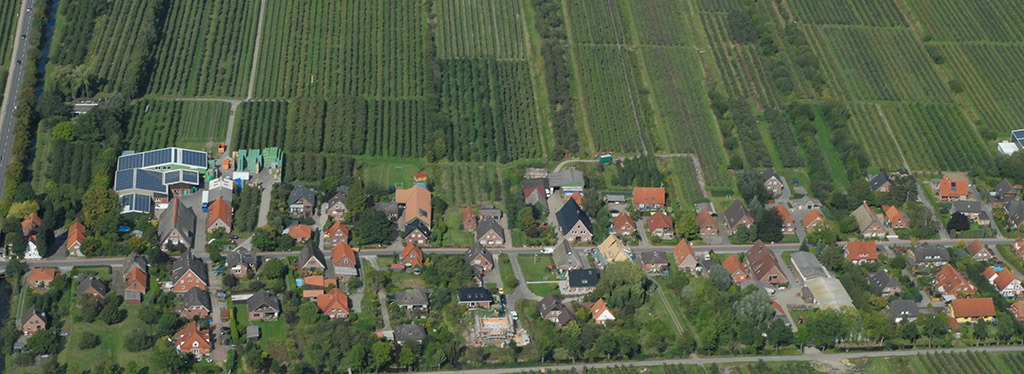
1.8 metres above sea level- in Altes Land that is quite high ground! Many of the other growing areas are a good 2.5 metres lower. After the Ice Age and the subsequent rising of the sea level around 8,000 years ago, the edges of the ancient Elbe valley became covered in layers of mud, clay and silt. This mixture is still the basis of this marshy ground and its high level of natural fertility.
Since this land lay unprotected on the edges of the river it was regularly flooded, which threatened the life and possessions of the people who had settled there.
Around 1140 A.D. Dutch settlers began building dykes on the river banks of the Elbe and its tributaries. These were intended to stop the repeated inundations. At the same time a dense network of ditches and channels was dug, to collect water behind the dykes and direct it into the Elbe. This network of ditches was expanded over the centuries that followed and was constantly maintained. It is still clearly visibly from the air and characterises the countryside and therefore also the lay-out of the orchard businesses.




